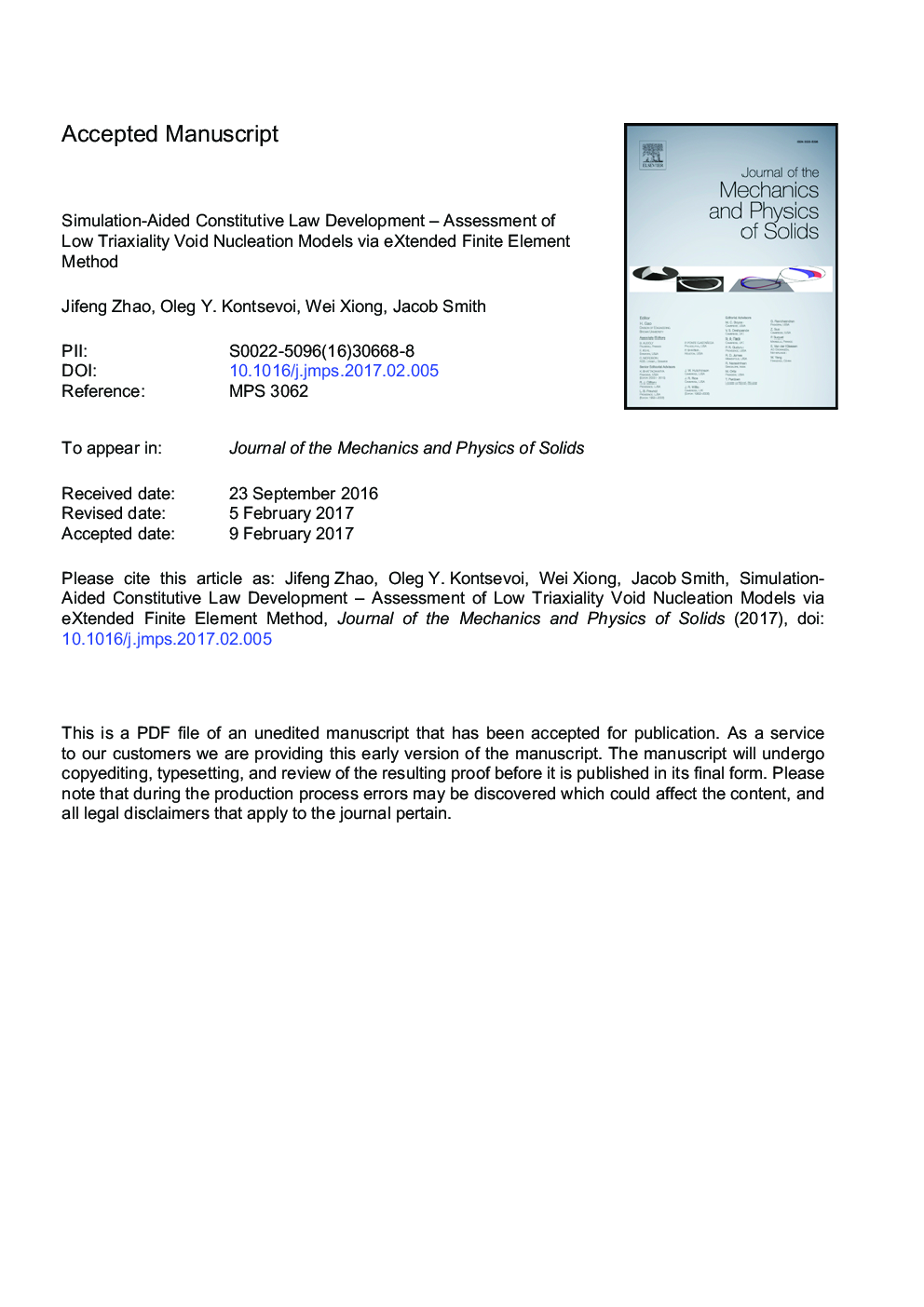| Article ID | Journal | Published Year | Pages | File Type |
|---|---|---|---|---|
| 5018130 | Journal of the Mechanics and Physics of Solids | 2017 | 37 Pages |
Abstract
In this work, a multi-scale computational framework has been established in order to investigate, refine and validate constitutive behaviors in the context of the Gurson-Tvergaard-Needleman (GTN) void mechanics model. The eXtended Finite Element Method (XFEM) has been implemented in order to (1) develop statistical volume elements (SVE) of a matrix material with subscale inclusions and (2) to simulate the multi-void nucleation process due to interface debonding between the matrix and particle phases. Our analyses strongly suggest that under low stress triaxiality the nucleation rate of the voids fË can be well described by a normal distribution function with respect to the matrix equivalent stress (Ïe), as opposed to that proposed (ϯ+1/3Ïkk) in the original form of the single void GTN model. The modified form of the multi-void nucleation model has been validated based on a series of numerical experiments with different loading conditions, material properties, particle shape/size and spatial distributions. The utilization of XFEM allows for an invariant finite element mesh to represent varying microstructures, which implies suitability for drastically reducing complexity in generating the finite element discretizations for large stochastic arrays of microstructure configurations. The modified form of the multi-void nucleation model is further applied to study high strength steels by incorporating first principles calculations. The necessity of using a phenomenological interface separation law has been fully eliminated and replaced by the physics-based cohesive relationship obtained from Density Functional Theory (DFT) calculations in order to provide an accurate macroscopic material response.
Keywords
Related Topics
Physical Sciences and Engineering
Engineering
Mechanical Engineering
Authors
Jifeng Zhao, Oleg Y. Kontsevoi, Wei Xiong, Jacob Smith,
